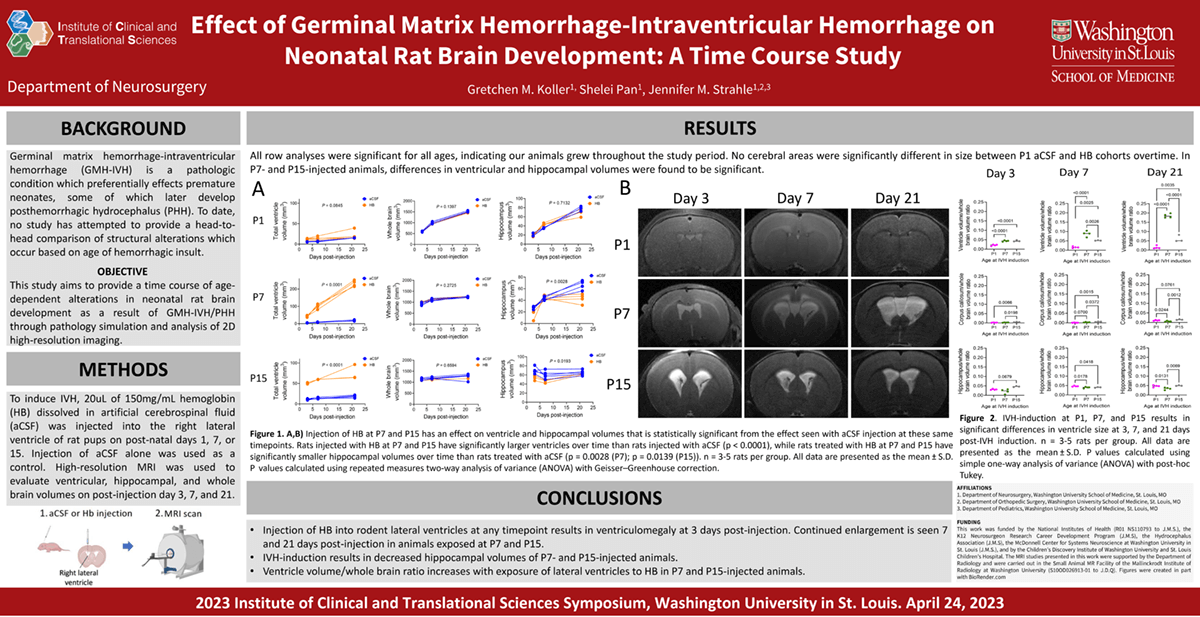
Introduction: Germinal matrix hemorrhage-intraventricular hemorrhage (GMH-IVH) is a pathologic condition which preferentially effects premature neonates, some of which later develop posthemorrhagic hydrocephalus (PHH). To date, no study has attempted to provide a head-to-head comparison of structural alterations which occur based on age of hemorrhagic insult. This study aims to provide a time course of age-dependent alterations in neonatal rat brain development as a result of GMH-IVH/PHH through pathology simulation and analysis of 2D high-resolution imaging.
Methods: To induce IVH, 20uL of 150mg/mL hemoglobin (HB) dissolved in artificial cerebrospinal fluid (aCSF) was injected into the right lateral ventricle of rat pups on post-natal days 1, 7, or 15. Injection of aCSF alone was used as a control. High-resolution MRI was used to evaluate ventricular, hippocampal, and whole brain volumes on post-injection day 3, 7, and 21.
Results: No cerebral areas were significantly different in size between P1 aCSF and HB cohorts overtime. Injection of HB at P7 and P15 has an effect on ventricle and hippocampal volumes that is statistically significant from the effect seen with aCSF injection at these same timepoints. Rats injected with HB at P7 and P15 have significantly larger ventricles over time than rats injected with aCSF (p<0.001), while rats treated with HB at P7 and P15 have significantly smaller hippocampal volumes over time than rats treated with aCSF (p=0.0028 (P7); p=0.0139 (P15)). Animals are currently undergoing behavior testing. We anticipate animals with larger ventricles and smaller hippocampal volumes will achieve lower scores than those with normal volumes.
Impact: Data obtained from this study could help us better understand the development of GMH-IVH/PHH neurological sequelae as they relate to structural alterations. The ability to relate previously known cognitive and physical functions to specific physical grey and white matter changes documented through imaging could allow for clinicians to accurately predict future manifestations of current injuries and deliver more individualized care to these neonates and older patients who experienced GMH-IVH/PHH during infancy.
Organization: Washington University in St. Louis
Koller GM, Pan S, Strahle JM